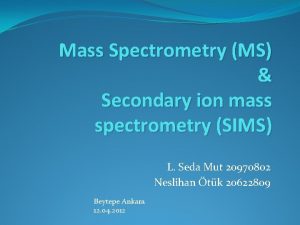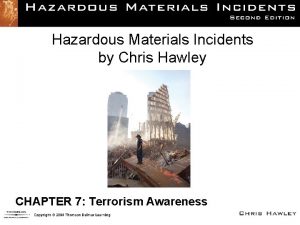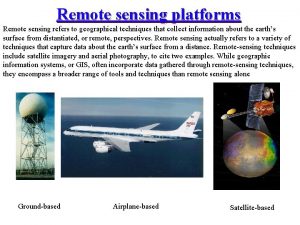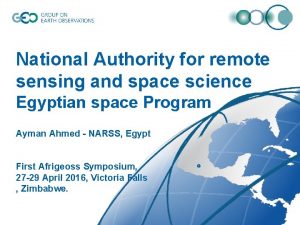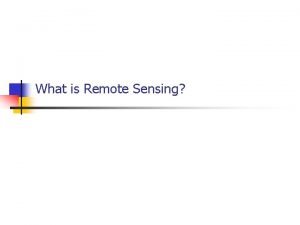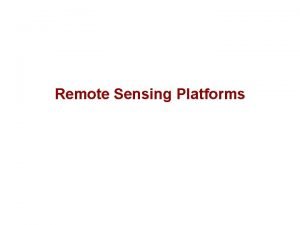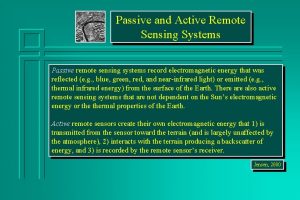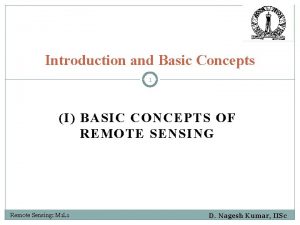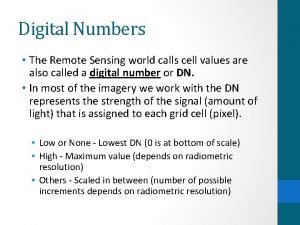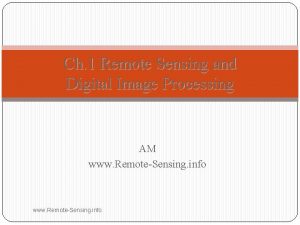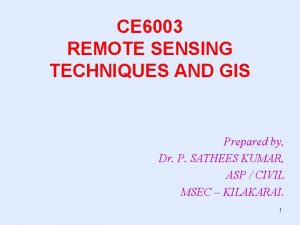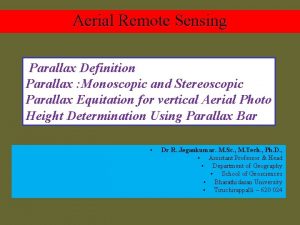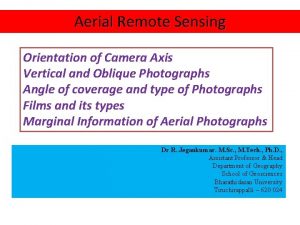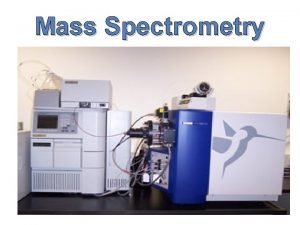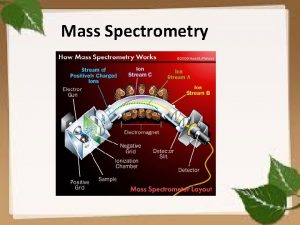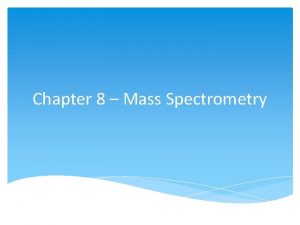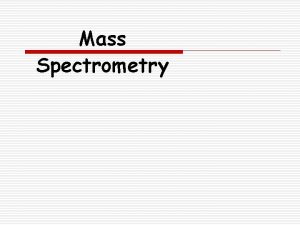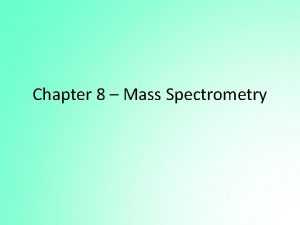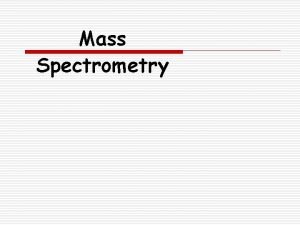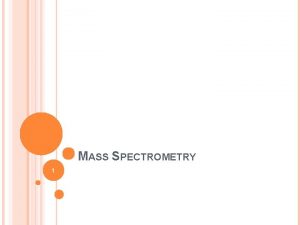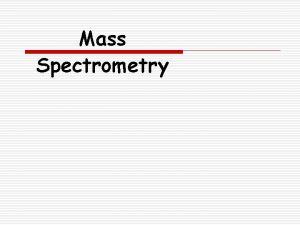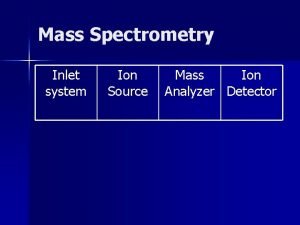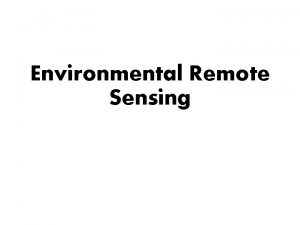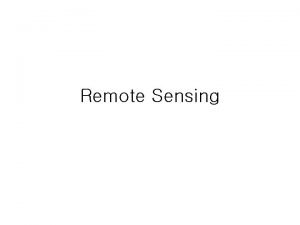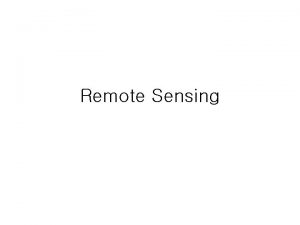Secondary Ion Mass Spectrometry and Remote Sensing in














- Slides: 14

Secondary Ion Mass Spectrometry and Remote Sensing in Space Exploration Gerardo E. Cornejo M. Bonner Denton Scott Tilden Roger Sperline Denton Research Lab Department of Chemistry University of Arizona 07 -08

Outline �Secondary Ion Mass Spectrometer Function Objectives Application to Space Exploration �Remote Sensing Function Objectives Application to Space Exploration

Secondary Ion Mass Spectrometer �Works by the principle of charge-to-mass ratio, separation of masses in magnetic sector analyzers –provides quantitative and qualitative analysis � 5 Major Components Primary ion source Primary ion column High vacuum sample chamber Mass analyzer Ion detection unit

Objectives Increase the sensitivity, stability and dynamic range of Secondary Ion Mass Spectrometry �Current methods to detect ions Faraday cups Ion multiplier �Capacitive Trans-Impedance Amplifier Faraday Cups

Faraday Cups � Gain is stable and precisely Faraday Cage Collector Electrode Out to Amplifier Load Resistor Out to Amplifier known (gain=1) � Bandwidth is consistent with use in sector-based mass spectrometry � Useful for Iion 10 -15 amp (1 ion/sec 1. 6 10 -15 amps) � Implies that one needs about 6250 ions/sec for detection by Faraday cup

Ion Multiplier Operates only when free mean path of the electrons is large ie. a high vacuum Statistically unpredictable

CTIA 4 Channel Detector CTIA is ideal for SIMS Fast (1 MHz or higher pixel) Low read noise 10, 000 x sensitivity improvement over current SIMS detectors Expect further improvement with 3 rd generation differential devices and cooling

Differential Capacitive Trans. Impedance Amplifier

Custom Ion Detection Devices Developed by the Denton Group � � � CTIA -1 A 32 channel device adapted from astronomy CTIA -2 (DM 01) A 4 channel single ended input device – demonstrated high sensitivity - but was also highly sensitive to environmental noise CTIA -3 (DM 03) A 128 channel wire bonded mass spec. detector CTIA -4 A 64 channel wire bonded mass spec. detector with novel noise reduction circuitry by ADIC CTIA -5 (DM 04) A 4 channel differential device designed to reject environmental noise CTIA -6 (DM 013) A 48 channel monolithic electrode mass spec. detector CTIA -7 (DM 016) A 4 channel differential device with X 1 & X 100 gain levels, programmable bandwidth & advanced low noise input FETs CTIA -8 (DM 015 ) A 512 channel monolithic electrode mass spec. detector (currently under test) CTIA -9 A 512 channel monolithic – fixes clocking problem on CTIA -8 (under fab) CTIA -10 A 1696 channel monolithic 12. 5 micron pitch mass spec array (under fab) CTIA – 11 A 4 channel differential with 2 to 4 fold increased sensitivity (under fab)

Application to Space Exploration �Currently in use in many missions “Stardust” mission employs SIMS to perform isotope ratio of oxygen analysis �Used to analyze return samples and obtain chemical composition from mass spectrum

Remote Sensing �Diverse forms and methods of applications depending on field of research �Fluorescent tag is placed on object that one may wish to observe �Taggant fluoresces by near IR excitation from laser diodes and/or ambient light and is detected by In. Ga. As focal plane arrays

Objectives �Produce a signal that is observable from a long distance �Vary collection optics to optimize the signal return �Minimize background noise with software controls

Applications �Possibility to track errant satellites/spacecraft that have lost communication and also space debris �Applications to tracking animal migration patterns if taggant is placed on animal groups

Thank you �Dr. M. Bonner Denton �Dr. Scott Tilden �Dr. Roger Sperline �The Denton Research Group
 Mass spectroscopy principle
Mass spectroscopy principle Ion mobility spectrometry
Ion mobility spectrometry Ifov and fov in remote sensing
Ifov and fov in remote sensing National authority for remote sensing and space sciences
National authority for remote sensing and space sciences Limitations of remote sensing
Limitations of remote sensing Remote sensing platforms
Remote sensing platforms Passive remote sensing
Passive remote sensing Limitations of remote sensing
Limitations of remote sensing Digital number in remote sensing
Digital number in remote sensing Limitations of remote sensing
Limitations of remote sensing Idealized remote sensing system
Idealized remote sensing system Geospatial data definition ap human geography
Geospatial data definition ap human geography Remote sensing ap human
Remote sensing ap human Stereoscopic parallax
Stereoscopic parallax Strip camera in remote sensing
Strip camera in remote sensing
